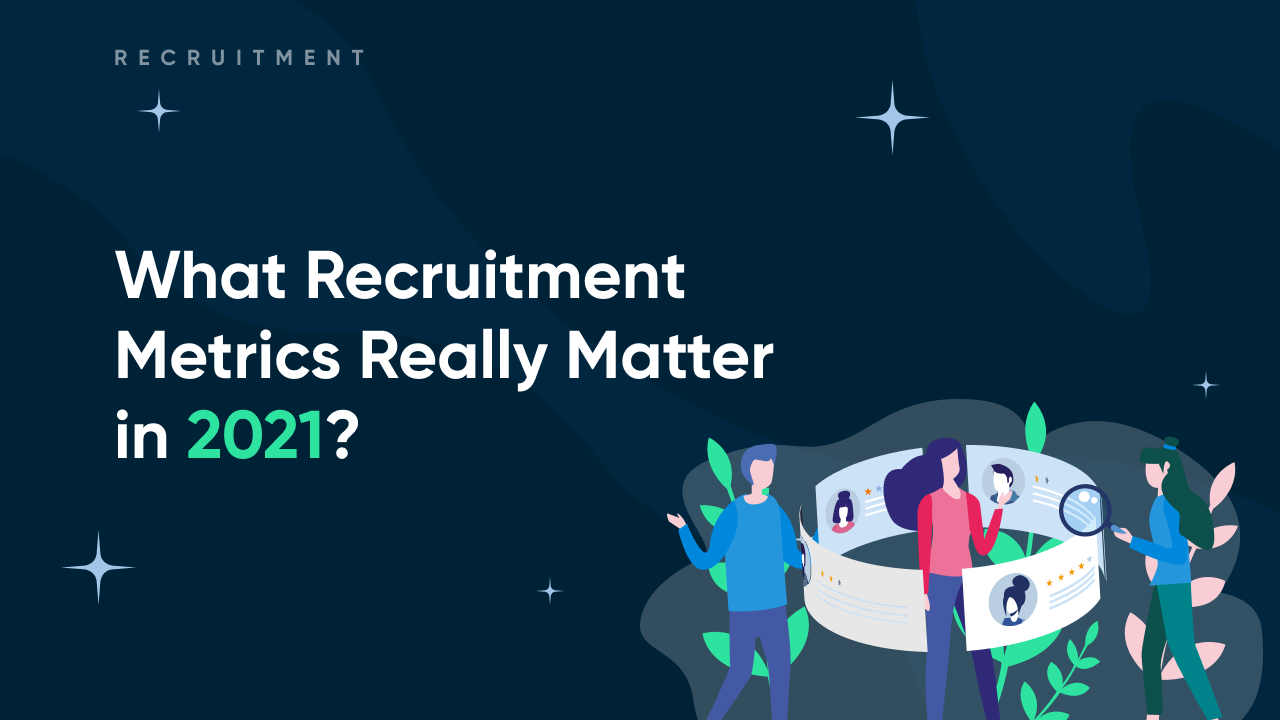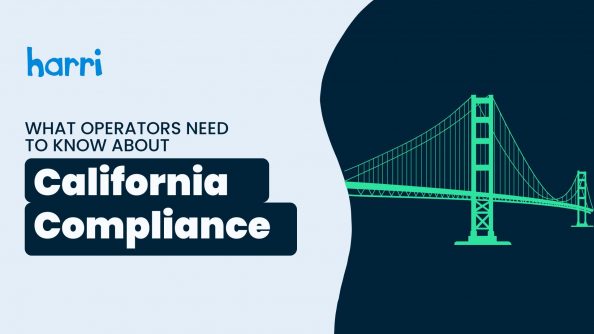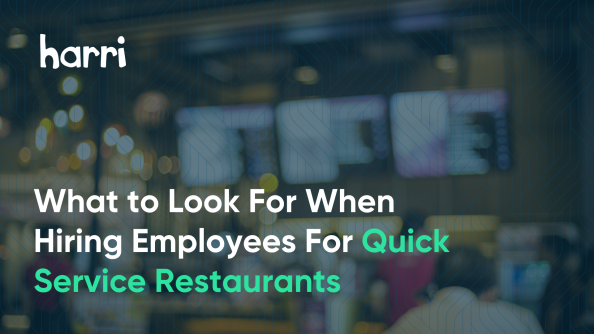What Recruitment Metrics Really Matter in 2021?

- By Harri Insider Team | September 1, 2021
If your business is still thinking of recruitment as a cost-centre, you’re doing it wrong.
People are at the core of everything that we do here in hospitality. Meaning, hiring the right people and business success are inextricably linked. You can have an impressive lifestyle brand of hotels but without the right team to bring the service to life? It’ll mean nothing to your guests.
Then, why is it that recruitment is still often measured by metrics such as time-to-hire and cost-per-hire? Surely, finding the right person is more important than filling a role at speed? Similarly, we understand that currently, times are tough financially, but measuring your team on “cost-per-hire” seems… pretty archaic.
So, what do we suggest? Focusing on the employee experience.
Embrace a set of analytics that enable you to take a more holistic view of your recruitment team and encourages a shift away from an order-taking hiring process towards a more strategic business partner offering.
Employee experience metrics are soft numbers, which are less interpretable than cost-per-hire, but they’re equally (if not more) important to attracting and retaining talent. Those are the recruitment metrics that really matter.
Here’s what we’d recommend!
1. Measure Your Employer Branding Efforts
Employer branding starts with external messaging, and for most hospitality businesses that means spotlighting your brand on social media. While there’s certainly a rhyme and reason to building a recruitment marketing content strategy (more on that here), it’s just as essential to measure the effectiveness of these strategies.
How?
For each channel, measure the stats on every post. Yes, every post.
Look at what works well, what posts are resonating most with your audience, which content is getting the most engagement? This is a great place to start as it means you can focus on bringing more of the content that your candidates LOVE.
Next, we’ll recommend stepping it up a little. A great metric is organic search traffic on Google, as well as how many people are visiting your careers site from your social channels and how many are subsequently converting into applications. This also applies to each individual job board that your open positions are being advertised on.
Or, if you use Harri’s reporting tools, we’ll give you lots of insight into application referrers, meaning you’ll get a deep understanding of which channels your candidates are coming from! Our comprehensive reporting tools allow you to gain visibility into the acquisition flow of candidates, which can tell you which channels drive the best hires and intelligently allocate job advertising spend.
Why is this important? Because if Instagram is giving you 10% of candidates but you’re spending 0% of your advertising budget on it, it may be worth shifting some resources to Instagram paid adverts to broaden your reach on this channel.
2. Forget Cost-per-Hire
It’s time we make a shift away from seeing recruitment as a cost and instead see it as an investment. We do it in marketing. So, why not recruiting – where people are our biggest asset?
We get that you’re still going to want to measure costs. However, the cost-per-hire departmentally and at differing levels of seniority, is always going to vary. Of course, you’ll need to invest more in niche roles if you want to hire the best talent – but this increased cost isn’t an indication of a failure in recruitment!
We recommend measuring your total recruitment costs i.e., recruiter salaries, job advertising, ATS, agencies etc as a percentage of the total salary of new employees or new hire payroll. Then, you’ll want to aim for around 5-20% in your hiring budget.
3. Candidate Experience is Key
From hello to hire, candidate experience has never been so important in such a talent short market. Want to stand out from your competitors? We’re not just talking about a slick recruitment process and consistent feedback for applicants. This is 2021.
You’ll want to be able to answer candidates’ questions in real-time and move them through the funnel quickly with automation. How do you do that? With Harri, of course! We built Carri, an AI-powered chatbot to complete all of the above with no work from your recruiters — meaning they can concentrate on offering the value-add that’ll give you a great candidate experience result. By using Carri as a conversational ambassador, you can humanise but also automate the candidate journey meaning that the process is simplified for all involved.
And just how do you measure candidate experience? Simple. We recommend the Net Promoter Score, measured by the % of candidates who rate your experience a 9 or 10 minus the % of candidates who rate the experience a 0-6.
This is an important one: 41% of candidates who received a “poor” experience were 41% likely to apply elsewhere.
4. It’s All About Quality
The job of the recruiter is to hire quality applicants. But this metric has always been a pretty elusive one. Just how do you measure a great hire? Well – it’s pretty tough.
Quality of hire is one of the more unique talent acquisition metrics. And that’s because, depending on how you calculate it, the quality of hire can reveal a lot of insights about your recruitment process. For example, many recruitment KPIs involve turnover rates, job performance, team fit, and employee retention and engagement. Many recruiters seek to optimise these specific numbers to hit their talent acquisition KPIs.
Recruiters should measure the quality of their hires through performance and retention data. You should also measure how your shiny-new-recruits fit with your company culture. If recruiters and hiring managers are pulling in what look like great hires who leave within the first six months, it’s possible that they’re screening for the wrong traits and aren’t surfacing the best candidates.
Before you even get to the hiring stage, however, there are many tools in Harri’s Applicant Tracking System to help you ensure you’re getting the right candidates through the pipeline. Tools such as screening questions are automated and don’t take up managers’ time, but also are quick and easy for candidates to complete, discouraging candidate drop off.
Optimising your Recruitment KPIs with Technology
Whatever your goals, Harri is here to help you along every step of the hiring process for both candidates and employers to ensure the process is optimised on both sides. By reducing your time to hire, giving you analytical insight into each candidate’s journey, and giving the candidate an amazing recruitment process, Harri can improve the hiring experience for both candidates and managers.
Want to find out how Harri can support your recruitment process? Click here to book time with one of the team today.


















